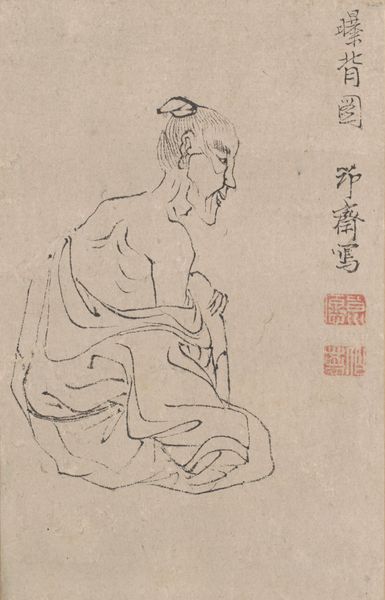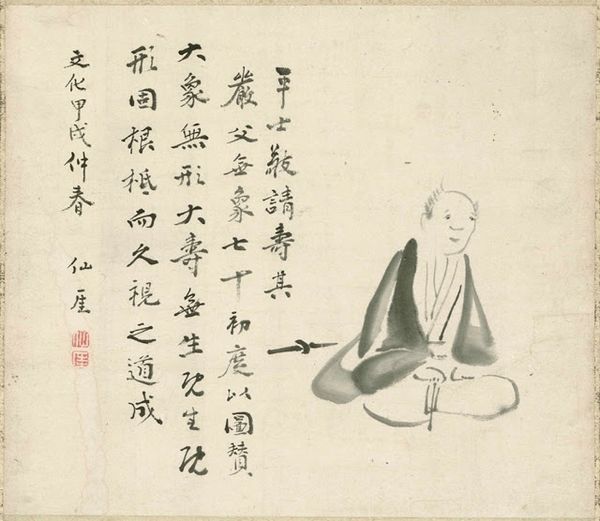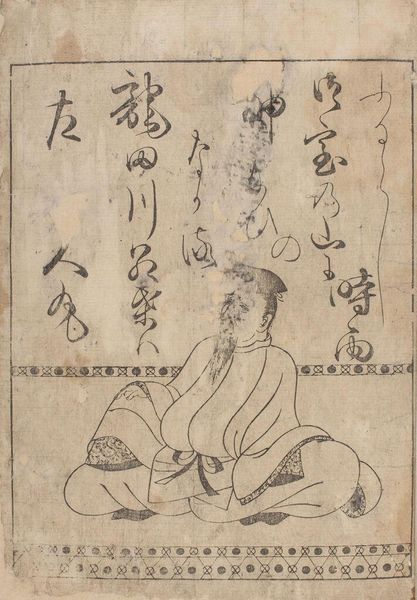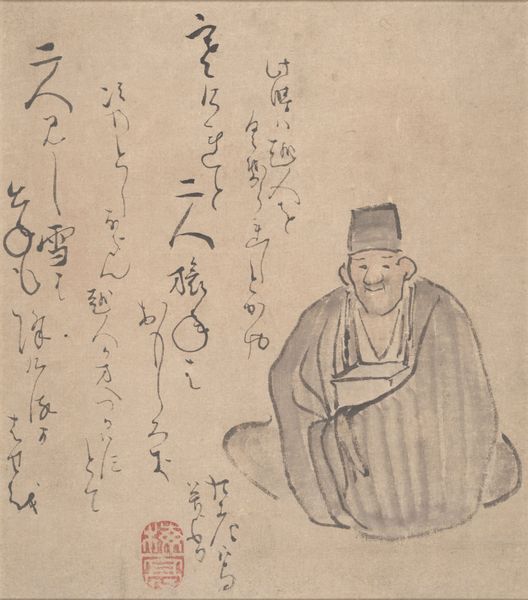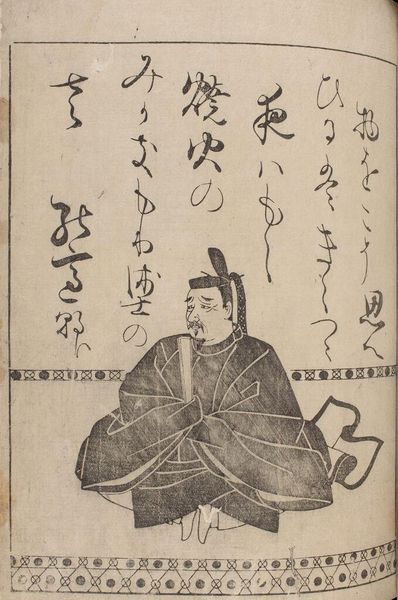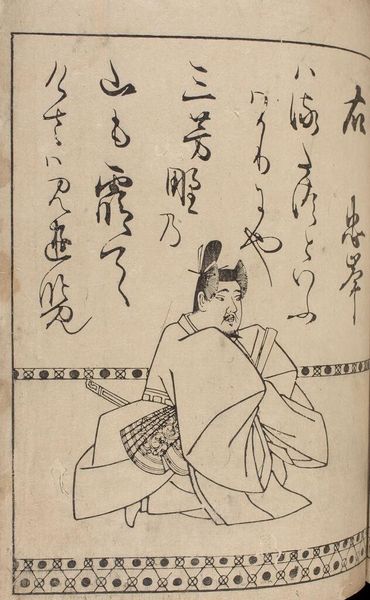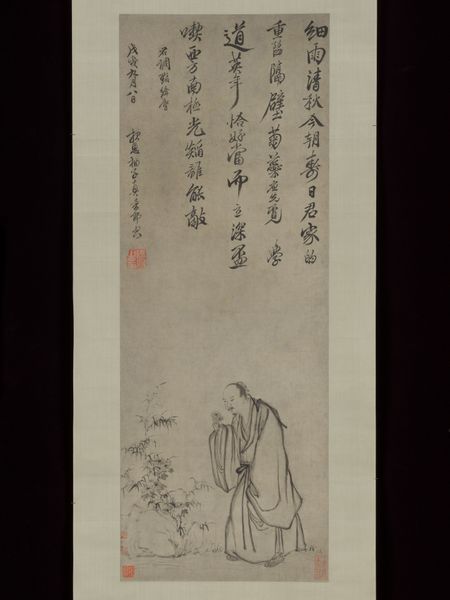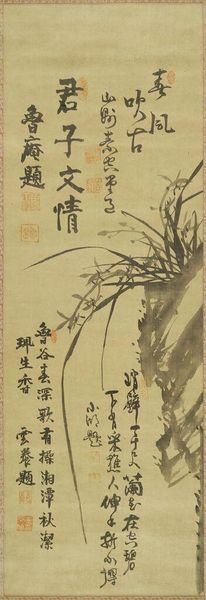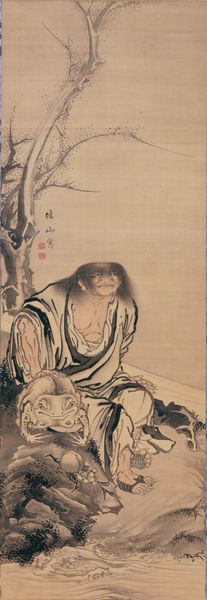
drawing, ink
#
portrait
#
drawing
#
asian-art
#
ukiyo-e
#
ink
Dimensions: 32.7 x 24.1 cm
Copyright: Public domain
Editor: This is Hokusai's *Sketch of Daruma*, an ink drawing held at the Brooklyn Museum. It's simple, yet the figure radiates such inner strength. What are your initial thoughts on its impact and historical positioning? Curator: This drawing speaks volumes about the evolving role of Buddhist imagery within Japanese society, and its entanglement with socio-political ideals. Consider how Daruma, traditionally a symbol of Zen Buddhism and unwavering perseverance, becomes reinterpreted through the lens of popular culture, largely due to the Ukiyo-e movement that Hokusai spearheaded. Editor: I see... it's not just a religious icon then. How did the context of its display shift its meaning? Curator: Exactly! Initially religious iconography was mainly confined to temples, used in rituals accessible primarily to monks and the elite. With the proliferation of prints like these, aided by the advancement of the printing press, suddenly spiritual figures enter everyday spaces - homes, shops. Ukiyo-e prints also faced strict censorship, shaping their subject matter, styles and meanings. Have you considered what the choice of Daruma as a subject in *this* particular style conveys about accessibility and devotion at the time? Editor: So it's part of a broader movement making sacred imagery more accessible, democratizing art, even... But were there any drawbacks to this popularization? Curator: Certainly. Widespread accessibility also runs the risk of diluting the original spiritual depth, possibly transforming it into a lucky charm or aesthetic object for display and discussion. This brings into question what the artist intended. We have to remember how it all affected cultural interpretation, audience reception and the complex power dynamics between religion, art, and the state at the time. Editor: That gives me so much to consider – thank you. Curator: Indeed! Examining this work provides insights into the crucial intersection of faith, cultural consumption and political expression within the rich history of Japanese art.
Comments
No comments
Be the first to comment and join the conversation on the ultimate creative platform.
